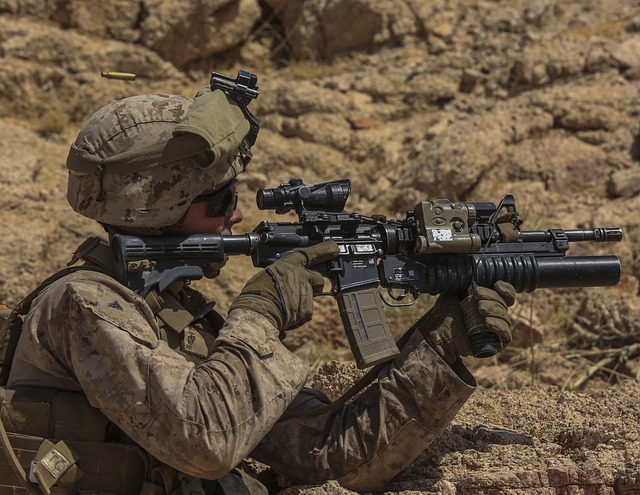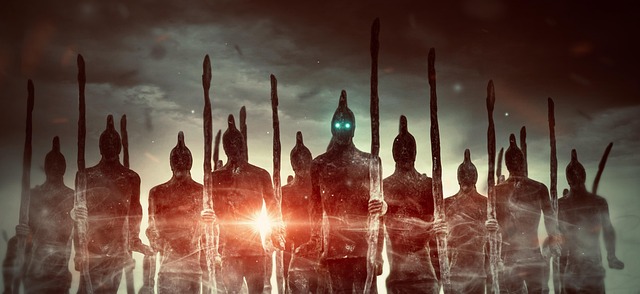The 1st Cavalry Division Flag is a powerful symbol of US military history, national pride, and unity. Displayed on government buildings and military bases, it honors achievements, remembers heroes, and strengthens community bonds. Strict protocols guide its presentation, ensuring respect for its symbolism. Public exhibitions foster national pride, military heritage, and camaraderie, playing a crucial role in recruiting efforts while showcasing the honor associated with service.
In the realm of government and military institutions, the display of flags serves as a powerful symbol of pride, history, and unity. This article explores the significance of flag displays on official buildings and military bases, highlighting the 1st Cavalry Division Flag as a testament to heritage and tradition. We delve into display guidelines and protocols, while examining the impact and benefits of publicly showcasing military flags, fostering a sense of camaraderie and national pride.
- The Significance of Flags in Government and Military Spaces
- 1st Cavalry Division Flag: A Symbol of Pride and Heritage
- Display Guidelines and Protocols for Official Buildings
- The Impact and Benefits of Publicly Showcasing Military Flags
The Significance of Flags in Government and Military Spaces

Flags have long held immense significance in government and military spaces, serving as powerful symbols that evoke a sense of pride, unity, and history. In the United States, for instance, the display of flags on government buildings and military bases is not merely decorative; it represents the values, traditions, and achievements of the nation and its defenders. The 1st Cavalry Division Flag, with its distinct design and rich heritage, is a prime example of this symbolic power.
On these official premises, flags are often flown at half-staff as a mark of respect for fallen heroes or during national days of mourning. They can also be displayed at full staff to celebrate significant achievements, commemorate special occasions, or honor the sacrifices made by those who have served their country. This visual representation of patriotism and commitment fosters a sense of belonging and strengthens the bond between citizens, government institutions, and the military.
1st Cavalry Division Flag: A Symbol of Pride and Heritage

The 1st Cavalry Division Flag, a vibrant and powerful symbol, proudly adorns government buildings and military bases across the nation. This iconic standard is more than just a piece of fabric; it represents the rich heritage, courage, and unwavering spirit of the U.S. cavalry. The flag’s design meticulously weaves together historical references and modern symbolism, reflecting the division’s lineage and accomplishments over centuries of service.
As a testament to the 1st Cavalry Division’s pride and tradition, this flag serves as a beacon of recognition for both active-duty soldiers and veterans alike. When unfurled on official premises, it evokes a sense of camaraderie, instilling in those who see it a deeper understanding of the division’s core values and its enduring impact on American military history. The 1st Cavalry Division Flag is not merely a display; it’s a living testament to the unit’s proud past, inspiring future generations to uphold its legacy.
Display Guidelines and Protocols for Official Buildings

Displaying flags, including the iconic 1st Cavalry Division Flag, on government buildings and military bases is a significant ritual that comes with precise guidelines and protocols. These rules ensure respect for the flag’s symbolism and history while maintaining order and aesthetics in official spaces. When unfurling the 1st Cavalry Division Flag or any other standard, it should be done with ceremony and dignity. The U.S. Flag Code offers detailed instructions on proper display, including specific guidelines for size, placement, and lighting to ensure the flag is always presented at its best.
For instance, on government buildings, the flag should be flown at a height visible above all other flags or structures. Military bases often have specific areas designated for flag displays, ensuring consistency and respect across the facility. During special events or ceremonies, additional guidelines may apply, such as displaying the national colors prominently or raising and lowering the flags in unison. Adhering to these protocols not only upholds protocol but also fosters a sense of unity and patriotism among those who serve and visit these sacred spaces.
The Impact and Benefits of Publicly Showcasing Military Flags

The publicly showcasing of military flags, such as the iconic 1st Cavalry Division Flag, on government buildings and military bases serves a profound purpose. It acts as a powerful symbol of national pride, military heritage, and unity. This display not only pays tribute to the valor and sacrifices of past and present service members but also instills a sense of respect and patriotism among the civilian population. The flags become tangible reminders of the nation’s commitment to defense and freedom, fostering a collective understanding of shared history and values.
Moreover, the exhibition of these flags enhances the sense of community and camaraderie within military bases. They serve as focal points for gathering and celebration, providing a visual representation of the diverse units and traditions that contribute to the overall strength and resilience of the armed forces. This public display also plays a crucial role in recruiting efforts, as it showcases the honor and pride associated with military service, attracting individuals who aspire to contribute to the nation’s security and well-being.
The display of flags, such as the iconic 1st Cavalry Division Flag, on government buildings and military bases serves a profound purpose. It symbolizes national pride, military heritage, and shared values. By adhering to established protocols for flag presentation, these displays foster a sense of unity and respect among citizens and service members alike. The public showcasing of military flags not only commemorates history but also strengthens community bonds and inspires future generations, making it an essential practice in honoring our nation’s past, present, and future defenders.
